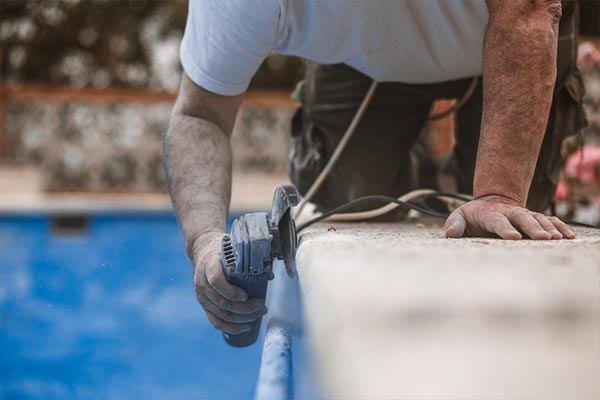TABLE OF CONTENTS
Rock formations, especially around pools, can add significant beauty and value to a property. They offer a natural look and feel, transforming your pool area into a tranquil oasis. Over time even the sturdiest rocks can deteriorate due to the constant exposure to chemicals, water, weather, and other natural elements. For residents of Ocean County, California, understanding the rock restoration process can be instrumental in preserving the beauty and functionality of their landscapes.
Here, we break down the rock restoration process step by step, providing insights for homeowners and businesses in Ocean County and beyond.
Inspection and Assessment
The first and most critical step in the rock restoration process is to inspect the damaged area thoroughly. Experienced professionals will evaluate the extent of the damage, whether it’s erosion, chipping, discoloration, or cracks. This assessment helps in determining the best methods and materials for restoration.
Cleaning the Surface
Before any repair work can begin, the affected rocks and surrounding areas need to be cleaned. Dirt, algae, calcium deposits, and other foreign materials can interfere with the restoration process. Depending on the type of contaminants, professionals may use pressure washing, chemical treatments, or gentle brushing.
Removing Loose or Damaged Material
Deteriorated rock fragments or loose materials are carefully removed. This is crucial as restoring over unstable sections can lead to further damage in the future. Often, chisels, hammers, or power tools might be used, always ensuring that only the damaged parts are targeted, keeping the sound rock intact.
Preparing the Surface for Restoration
To ensure a seamless restoration, the cleaned and cleared area is then prepared for the application of repair materials. This might involve slightly roughening the surface for better adhesion or applying a primer.
Material Application
Based on the type and extent of the damage, different materials might be used:
Patching: For minor cracks or chips, a patching compound designed specifically for rock repair is applied. This material is generally durable, resistant to pool chemicals, and can be textured to match the original rock surface.
Rebuilding: For significant erosion or lost portions of the rock, a process called shotcrete or gunite may be used. This involves spraying a mix of concrete and sand to rebuild the rock structure. Once set, this can be sculpted and textured to mimic the original formation.
Coloring and Texturing
One of the hallmarks of a successful rock restoration is ensuring that the repaired area blends seamlessly with the surrounding rock. This involves:
Color Matching: Using tints and stains, professionals match the color of the new material with the existing rock. This might be done while the material is wet or after it has set, depending on the desired outcome.
Texturing: The surface of the new material is then textured to imitate the natural rock surface. This can be achieved using tools, brushes, or even hands, depending on the intricacy required.
Sealing the Rock
To protect the repaired area and prolong its life, a sealant is applied. This not only safeguards the rock against chemical and water damage but also enhances its color and luster. Especially in the pool environment, where the rock is continually exposed to water, chlorine, and other chemicals, a high-quality sealant is vital.
Post-Restoration Care
After the restoration process, professionals often provide homeowners with guidelines for maintaining their newly restored rocks. This includes advice on cleaning, protecting against chemical exposures, and periodically checking for signs of wear and tear.
Should You Get Rock Restoration?
For homeowners in Ocean County, California, preserving the natural beauty of their pool landscapes is more than just aesthetics; it’s about protecting an investment. By understanding the restoration process, they can make informed decisions and ensure that their little slice of nature remains as beautiful and sturdy as the day it was installed.
With dedicated professionals specializing in pool rock repair, residents of Ocean County can breathe easy knowing that their cherished rock formations are in safe hands. Whether it’s minor chipping or major reconstruction, understanding the process can give homeowners peace of mind, ensuring the longevity and beauty of their landscape for years to come.




